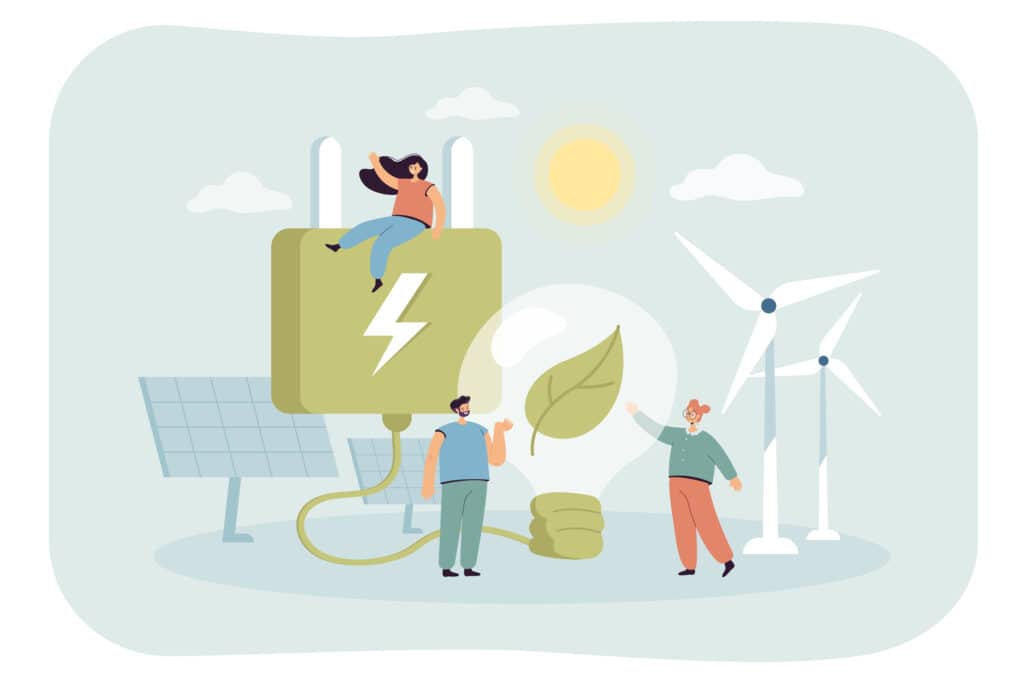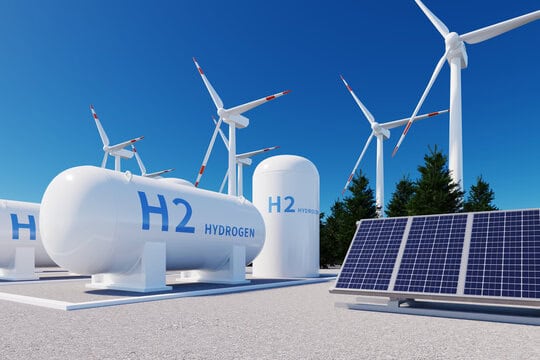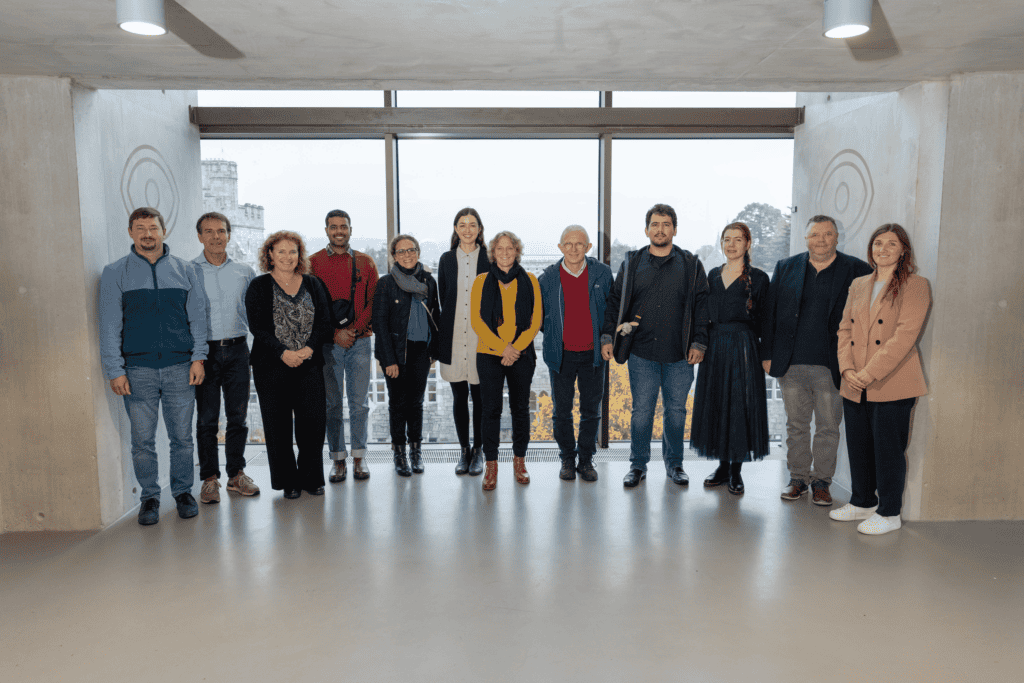A Vision for Accessible, Clean Energy
Imagine a world where communities could affordably produce their own clean energy from the materials around them with systems made locally, free from the dependence on pollutant fossil fuels or overburdened centralised grids that are increasingly costly and susceptible to weather, transportation and distribution infrastructure disruption. Picture a future where energy poverty may no longer be a barrier to personal and community progress, regardless of location on the planet, and each person, household, business and community contributor plays a part in the effort to stop climate change by producing and using only clean energy free from pollution.
We can only meaningfully tackle climate change at this late stage of development if everyone on the planet transitions to living this vision. Achieving that requires fresh, bold science-to-technology ideas. This is the purpose and vision behind the FreeHydroCells project – a groundbreaking project funded by the European Union that aims to completely redefine ideas and efforts on how we could produce and use affordable clean energy through green hydrogen fuel. This could rapidly impact the environment and help to stop climate change while potentially offering a feasible and realistic way forward for producing and using clean energy to meet the varying needs of individuals and communities.

Understanding Green Hydrogen and the Current Landscape
At the heart of this vision lies green hydrogen – often referred to as the fuel of the future. Unlike grey and blue hydrogen, which incorporate fossil fuels – green hydrogen is produced by splitting water into hydrogen and oxygen using a renewable energy source, leaving behind no harmful byproduct emissions. It’s clean, sustainable, and brimming with potential.
But producing green hydrogen fuel, especially at sufficient scale, has always been a challenge. Two key concerns have been low efficiency and high cost of any developed technologies – particularly electrolyser-based systems. While electrolysers are central to many existing green hydrogen strategies, their production remains very expensive, which is amplified further when considering the additional high financial, material, and energy input requirements compared to the net usable green energy they generate.
Electrolysers rely on the availability of sufficient, continuous input energy, typically harvested from renewable sources like wind, which must be converted to electricity, transmitted with minimal loss, and delivered – often across large distances – to where the electrolyser is located. This adds layers of logistical and financial complexity and cost. Wind energy, especially offshore, has emerged as a leading candidate due to its potential to supply the required voltage at scale. However, the systems needed to link this energy to hydrogen production facilities are still developing, and many projects are yet to become operational.
Strategies Taking Shape Across Europe and Beyond
In short, most national and regional action plans for green hydrogen involve producing it in onshore clusters of electrolysers powered by off-shore wind farms and then distributing the green hydrogen fuel to large, centralised storage locations. The next steps could be blending hydrogen into existing hydrocarbon supplies, using it to generate electricity for the grid, or repurposing natural gas infrastructure for its delivery to the place of usage.
These plans are ambitious and technologically impressive. However, significant uncertainties exist around the storage of hydrogen gas fuel, as well as around its safe and effective distribution and transportation. Present plans include transporting the hydrogen fuel to sea and storing it in depleted natural gas fields and later retrieving it back to land again when needed. This significantly adds to the financial and input energy costs of storage. Logistically and technologically, the problems around embrittlement, hydrogen gas leak losses, oxygen contamination, and safely maintaining and delivering purified hydrogen gas without the fear of combustion or explosion, are paramount concerns.
Shifting Narratives and Recognising the Need for Options
Given these realities, there has been an understandable shift in narrative: green hydrogen is now often positioned as a high-cost, premium fuel, best suited for specific users who can afford it, or for it to be integrated into hydrocarbon production and natural gas processes to at least have some renewable impact. These approaches are very well intentioned in the near term, particularly as we work to meet pressing energy and climate deadlines with few if any emerging technology options to help drive these initiatives towards more green and affordable solutions.

The clean energy field still lacks fresh and novel science-to-technology ideas to progress towards carbon neutrality. We need alternatives to effectively overcome these many and significant challenges to what, after all, started out as our main goal: to find a viable, low-cost, sustainable and efficient method to replace the use of fossil fuels with green, renewable energies. It will otherwise be difficult to rapidly stop the environmental damage we are doing to our planet by the burning of fossil fuels and depleting our rare and finite resources. The current momentum underscores the importance of expanding the solution space.
The Case for Fresh, Transformative Innovation
As is evident by now, we are in urgent need of positive, disruptive, interventionism from other emerging science-to-technology ideas that could further radically change how we think about solving the clean energy problem. We need new emerging science-to-technology initiatives to revitalise us towards our initial climate action goals, but with even greater urgency and higher impact!
This is where FreeHydroCells comes in, as a new emerging science-to-technology initiative to enrich the landscape of possibilities around green hydrogen production, storage and transportation/distribution. By focusing on locally produced, self-driven photoelectrochemical systems that don’t rely on rare materials or expensive infrastructure, the project is working to democratise clean energy access while pushing the science-to-technology boundaries of what’s possible in green hydrogen production.

Related read: The story behind FreeHydoCells
We need solutions that are not only sustainable but truly scalable and affordable for all. FreeHydroCells is stepping forward to offer one such potential path.
In Part 2, we explore what makes this project so unique – and how it could help us move closer to a clean energy future that works for everyone, everywhere.
